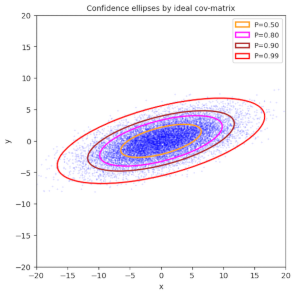How to compute confidence ellipses – III – 4 alternative construction methods
In previous mathematical posts of this blog, we have studied some core properties of Bivariate Normal Distributions [BVDs]. During the rather mathematical tour de force we have come across various methods to construct and plot confidence ellipses for a given confidence level and respective Mahalanobis distance from the distribution’s center. We have also covered the mathematical derivation of the methods.… Read More »How to compute confidence ellipses – III – 4 alternative construction methods

